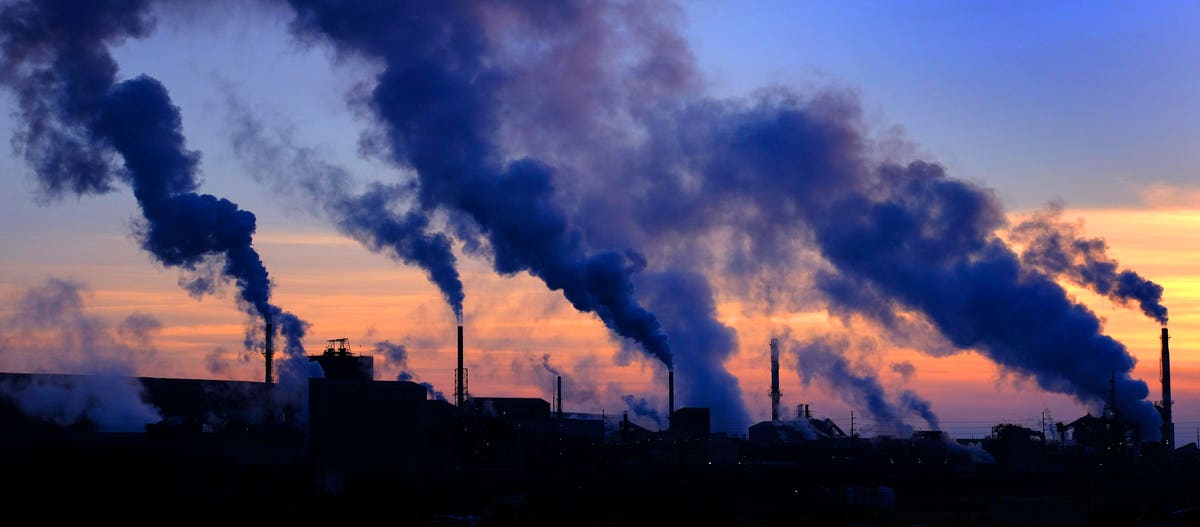Avnos says that it’s building technology that’s a “twofer” when it comes to environmental crises: it sucks carbon dioxide directly out of the atmosphere and produces water as a byproduct of the process. On Thursday, the company emerged from stealth and announced that it has financial commitments from big oil companies ConocoPhillips and Shell and airline JetBlue worth at least $80 million.
Based in Los Angeles, Avnos expects to begin commercial operations by 2025, using a proprietary system it calls hybrid direct air capture (HDAC). The system is built around modules about the size of a 20-foot shipping container that pull in ambient air and run it through a series of filters. Water condensation, similar to what occurs in a dehumidifier, is collected, pumped out and stored, and the CO2 flows into tanks, CEO Will Kain told Forbes. He said there’s a 5-to-1 ratio of water produced for every ton of captured CO2. A pilot version of the system will open later this year in Bakersfield, California.
“Air comes in and we first extract water. Then the air moves from the water extraction device, it’s dry, into the CO2 extraction part of the system,” Kain says. Funding from its industrial backers includes upfront investment and deployment of its system over multiple years. The water it expects to produce may generate additional revenue, while the captured CO2 could be used to make synthetic fuels by ConocoPhillips and Shell.
The reality of climate change is growing apparent and undeniable, including this year’s record heat, ever more intense storms, drought and raging wildfires in Canada. To slow that, it’s necessary to wean the world off of fossil fuels with more renewable energy but also to do something to reduce the vast amount of human-generated CO2 that’s built up in the atmosphere and oceans. That’s given rise to a series of startups, including Climeworks, Charm Industrial and Equatic, an L.A.-based rival to Avnos, that all take different approaches to direct carbon removal.
Along with a business model based on selling carbon credits, what these companies share is a promise that they can actively measure exactly how much CO2 they’ve removed.
That’s important as an earlier wave of companies selling so-called carbon offsets, often by promising to plant trees that may or may not exist, contributes to concerns over “greenwashing.” Earlier this year, David Antonioli, CEO of Verra, the biggest certifier of carbon credits, stepped down after acknowledging that a significant portion of credits the nonprofit approved wasn’t based on reality, according to The Guardian.
“Put Avnos in the engineered solutions bucket,” Kain said. “We have all manner of instruments that can measure the amount of air that flows into our system and the CO2 content of the air that flows into our system and how much comes out the back end.”
Investing in Avnos’ HDAC tech “aligns with our company’s commitment to finding innovative solutions that reduce carbon emissions crucial to enable an orderly energy transition,” Warwick King, a ConocoPhillips vice president, said in an emailed comment.
The company’s pilot facility in Bakersfield, funded partly with a U.S. Department of Energy grant and by SoCal Gas, will be designed to remove 30 tons of CO2 per year and generate 150 tons of water, Kain said. A larger, commercial-scale module that can remove 300 tons of CO2 and make 1,500 tons of water should begin running in 2024. Multiple modules can be stacked together to create significantly more capacity, ideally relying on large solar or wind installations for power.
“We think a massive differentiator (for Avnos) is that water positivity and the ability to use HDAC as a tool in fighting drought,” Kain said. “I think we can differentiate ourselves in many jurisdictions where producing water creates additional value, in locations like California, Arizona, in the desert of Chile, for example, where there’s great renewable capacity.”
Read the full article here





